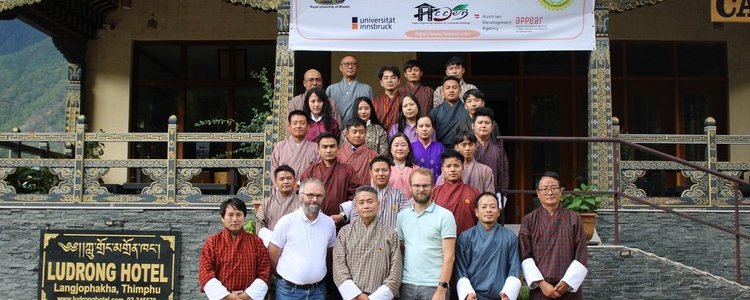As part of the project Strengthening Capacity of Higher Engineering Education for Sustainable Buildings (HEESeB), a 7-day course on Building Energy Simulation was conducted from July 18th to 25th, 2024, in Thimphu, the capital city of Bhutan. The course was facilitated by Professor Dr. Wolfgang Streicher and Dr. Martin Hauer from the University of Innsbruck, Austria. The primary goal of hosting the course in Thimphu was to attract not only academics from Jigme Namgyel Engineering College and the College of Science and Technology of the Royal University of Bhutan but also practicing engineers and architects from the field. A total of 23 participants attended the course, including 5 women (1 Architect and 4 Engineers).
The objective of building energy simulation is to evaluate and optimize the energy performance of a building. This involves using computer-based analytical processes to estimate heating and cooling loads, predict energy use, and identify opportunities for energy savings. The software used for energy simulation during the course was Rhino 8 with the Grasshopper plugin. Participants engaged in hands-on training with Rhino software and covered the following topics:
- Theory and Introduction to Energy-Efficient Building Design
- Applied tools for U-value calculation and climate data analysis
- Climate data analysis and solar potential calculation using the Ladybug tool
- Theory and Introduction to Energy Building Simulations
- Hands-on training on Single-Zone modeling using the Honeybee tool
- Parametric analysis of passive building design measures using the Honeybee tool
- Hands-on training on Multi-Zone modeling using the Honeybee tool
- Energy model creation from a 2D-floor plan
- Self-assessment of a typical floor plan of a built house in Thimphu
- Introduction to thermal window calculation using the LBNL WINDOW software
- Introduction to Daylight modeling using the Honeybee tool
Participants were awarded certificates of participation upon completion of the course.
